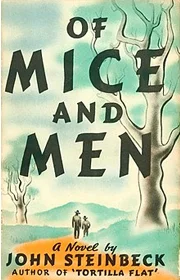
“Of Mice and Men” is a poignant novella by John Steinbeck set against the backdrop of the Great Depression. The story follows two displaced ranch workers, George and Lennie, as they navigate a world marked by economic hardship. Bound by a steadfast friendship, they share a dream of owning a piece of land that represents hope and independence. As they encounter challenges and meet other characters on a California ranch, the novella explores themes of loneliness, friendship, and the pursuit of the American Dream. The narrative unfolds with a mix of aspirations and harsh realities, capturing the essence of the human condition during a challenging period in history.
Read Of Mice and Men Flipbook:
Listen to Of Mice and Men Audiobook:
[Not yet available]
Title: “Of Mice and Men”
Author: John Steinbeck
Publication Year: 1937
Genre: Classic American literature, realist fiction
Setting: 1930s California during the Great Depression
Plot: Follows two itinerant workers, George and Lennie, as they strive for the American Dream amidst challenges and relationships on a ranch.
Themes:
Loneliness and Isolation
Friendship and Companionship
The American Dream
Characters:
George Milton
Lennie Small
Candy
Curley
Curley’s Wife
Symbolism:
Animals (Mice and Rabbits)
Dream of Land Ownership
Legacy: A classic work with a tragic element, addressing timeless themes in American literature. Adapted into various forms, including plays and films.